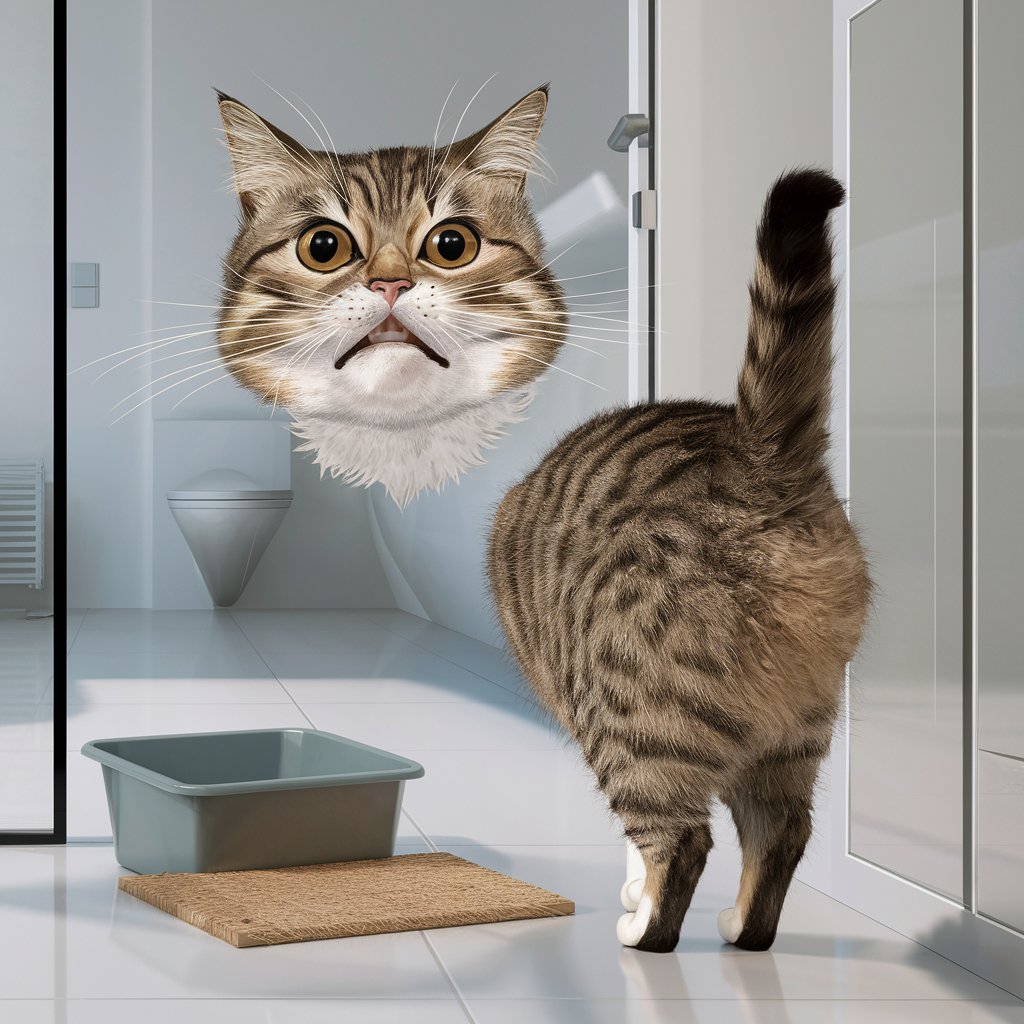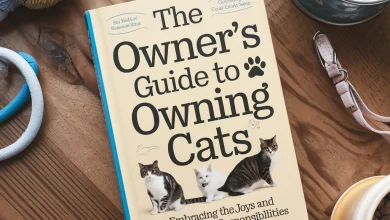Why Your Cat Gets the Bathroom Jitters: Understanding Feline Anxiety

Cats are known for their independent and often mysterious nature. However, if your feline friend seems nervous or anxious when using the bathroom, it’s a sign that something isn’t quite right. Understanding why your cat feels this way is crucial to ensuring their comfort and well-being. Let’s dive into the possible reasons and solutions to help your kitty feel more at ease.
The Importance of Bathroom Behavior
For cats, the bathroom is more than just a place to relieve themselves; it’s a vulnerable moment where they need to feel safe and secure. When a cat is nervous or anxious during this time, it can lead to a variety of issues, including avoidance of the litter box, accidents around the house, and even health problems. Here are some common reasons your cat might feel uneasy:
1. Litter Box Location
Cats are creatures of habit and prefer their litter box in a quiet, low-traffic area. If the litter box is placed in a busy or noisy spot, your cat may feel exposed and anxious. Try relocating the litter box to a more secluded area where your cat can have some privacy.
2. Litter Box Cleanliness
Cats are fastidious animals and prefer a clean litter box. If the litter box is dirty or has an unpleasant odor, your cat might be reluctant to use it. Regular cleaning is essential to keep your cat comfortable. Scoop the box daily and change the litter at least once a week to maintain a clean environment.
3. Type of Litter
Believe it or not, the type of litter you use can significantly impact your cat’s comfort. Some cats are picky about the texture or scent of their litter. If your cat seems nervous, try experimenting with different types of litter to find one they prefer. Unscented, clumping litters are often a safe bet.
4. Litter Box Size and Style
The size and style of the litter box can also play a role. A box that is too small can make your cat feel cramped, while a covered box can trap odors and make them feel trapped. Ensure the litter box is large enough for your cat to move around comfortably and consider an open design to help them feel less confined.
5. Health Issues
If your cat suddenly becomes anxious when using the litter box, it could be a sign of a medical problem. Urinary tract infections, bladder stones, and other health issues can cause discomfort and make your cat associate the litter box with pain. If you notice any changes in your cat’s bathroom habits, a visit to the vet is in order to rule out any medical conditions.
6. Previous Negative Experiences
Cats have excellent memories, and a previous negative experience can make them anxious about using the bathroom. This could be anything from a loud noise startling them while they were in the litter box to a painful medical condition that has since been resolved. Patience and positive reinforcement can help your cat overcome their fears.
7. Stress and Anxiety
Just like humans, cats can experience stress and anxiety. Changes in their environment, such as moving to a new home, the addition of a new pet, or even changes in your routine, can make your cat feel anxious. Providing a stable, predictable environment and plenty of attention can help alleviate their stress.
Solutions to Help Your Cat Feel Comfortable
1. Create a Safe Space
Ensure your cat’s litter box is in a quiet, low-traffic area where they can feel safe. Avoid placing it near noisy appliances or in areas where other pets or children might disturb them.
2. Maintain Cleanliness
Keep the litter box clean by scooping it daily and changing the litter regularly. This will help your cat feel more comfortable and reduce any unpleasant odors.
3. Experiment with Different Litters
If your cat seems uncomfortable, try different types of litter until you find one they prefer. Unscented, clumping litters are often a good choice for picky cats.
4. Provide Multiple Boxes
If you have multiple cats, provide multiple litter boxes to reduce competition and ensure each cat has a place to go. The general rule is one box per cat plus one extra.
5. Monitor Health
Regular vet check-ups are essential to catch any health issues early. If you notice any changes in your cat’s bathroom habits, consult your vet immediately.
6. Reduce Stress
Minimize changes in your cat’s environment and provide plenty of attention and reassurance. Use calming products, such as pheromone diffusers, to help reduce their anxiety.
7. Positive Reinforcement
Encourage your cat to use the litter box by rewarding them with treats and praise. This can help create a positive association with the bathroom experience.
Conclusion
Understanding why your cat feels nervous when using the bathroom is the first step in helping them feel more comfortable and secure. By addressing the potential issues and providing a safe, clean, and stress-free environment, you can ensure your cat’s bathroom experience is a positive one. Your cat’s comfort and well-being are worth the effort, and a happy cat means a happy home.



